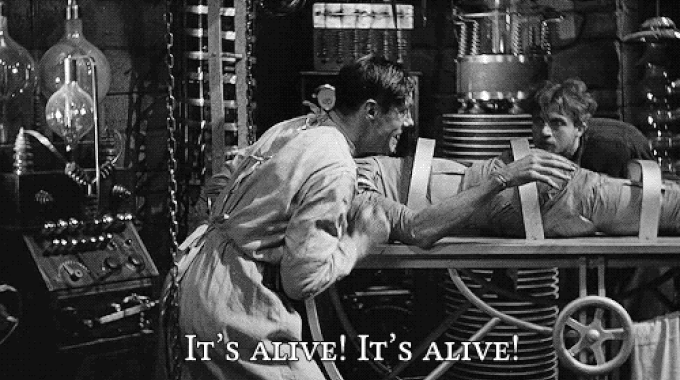When I set out on this latest foray into the realm of HP AC voltmeters, my original acquisition was an HP 3400A I got off eBay from a gentleman in North Carolina. It came at a relatively dirt-cheap price and free shipping and a guarantee. So, it arrived not exactly DOA but not working. I contacted the seller who promptly refunded all of my money and told me to keep the unit.
(By the way, I sent him a check for $25 to cover the shipping; I am not as scurrilous as you might think I am!)
Here is a couple of videos I posted to demo the problem. Clearly, it was not measuring anything.
Anyway, it sat on the shelf for a while and, one Sunday, I saw yet another HP 3400 unit out on eBay for less than dirt. Grandiose visions danced in my head as I picked that one up as a donor. (When will this madness end?)
It arrived, a smoldering hulk (as advertised) and I set about diagnosing the first unit's problems with this as a backup/donor. The adventure was a marvelous exercise in debugging (yet it was not) and a wonderful revelation in how well written the old HP op/tech manuals really were.
(Back again, some time in middle May.)
So, I blocked out a nice Spring Sunday late morning and afternoon to debug this beast, figuring it would take the whole day. What I discovered was that, once you got into it, the HP manuals really are understandable and their troubleshooting steps do make sense. Here are some photos of the guts in no special order, just to give you a sense of that's going on.
 |
| Ready to rock.. |
 |
| A4 Board with Thermocouples (TC401 and TC402) |
 |
| Unit Range Switch |
 |
| A2 board with Nuvistor |
 |
| A6 Board Top View |
 |
| A6 Board Ground Level |
To cut this narrative short, troubleshooting involved tracing the signal from the input jack through the range switch, the A2 board and thence over to the A4 board and into the A6 board. The step-by-step guided me past the anticipated shoals of the A2 (nuvistor) and the A4 (with its thermistors) and intact onto the rocky beach of the A6. I was really concerned that the thermocouples had to be replaced but it was not to be.
Anyway, I poked around the A6 board and found that something was misbehaving. Glancing at my donor unit, I noted that its A6 board's photochopper/modulator/demodulator assembly looked entirely different than the DUT and I reasoned that parts swapping was probably not in the cards. After a break for lunch and gazing at the two units, it hit me that both A6 boards, while different, were plug-in units and, in a WTF moment, I swapped them out. (Well, I put the donor unit's A6 into the DUT slot)
Wham!
I fired the sick 3400 up and, after the warm-up mambo, it settled down and behaved like a well puppy! Follow-on measurements and a waltz through the calibration procedures yielded a unit that was shockingly accurate and reliable on all ranges, so much so, that it has now replaced my other 3400 as the official bench AC voltmeter.
What a joyful experience yielding a good unit and three free hours on a Sunday afternoon to play with my new toy and enjoy a couple of cold ones with the bride.
-30-
